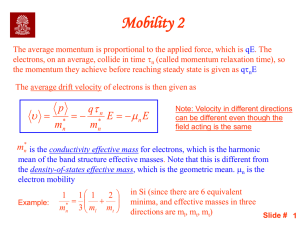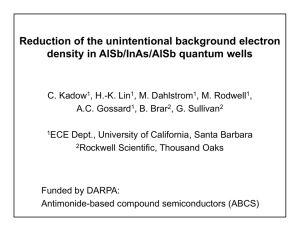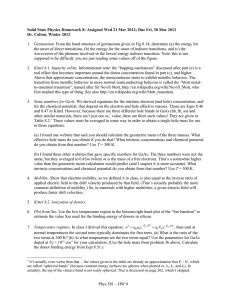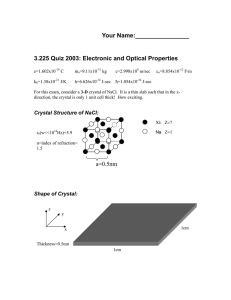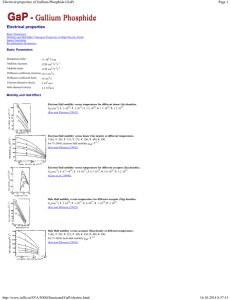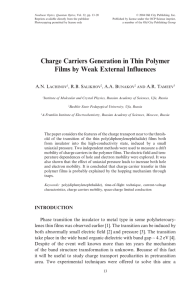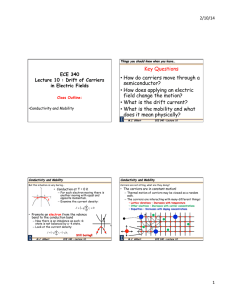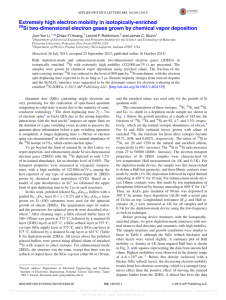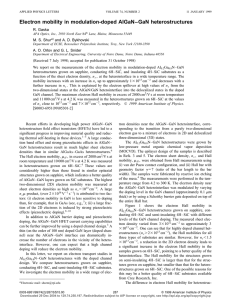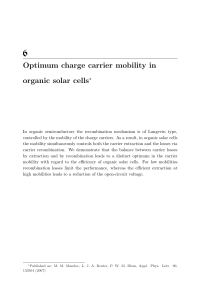Homework D
advertisement
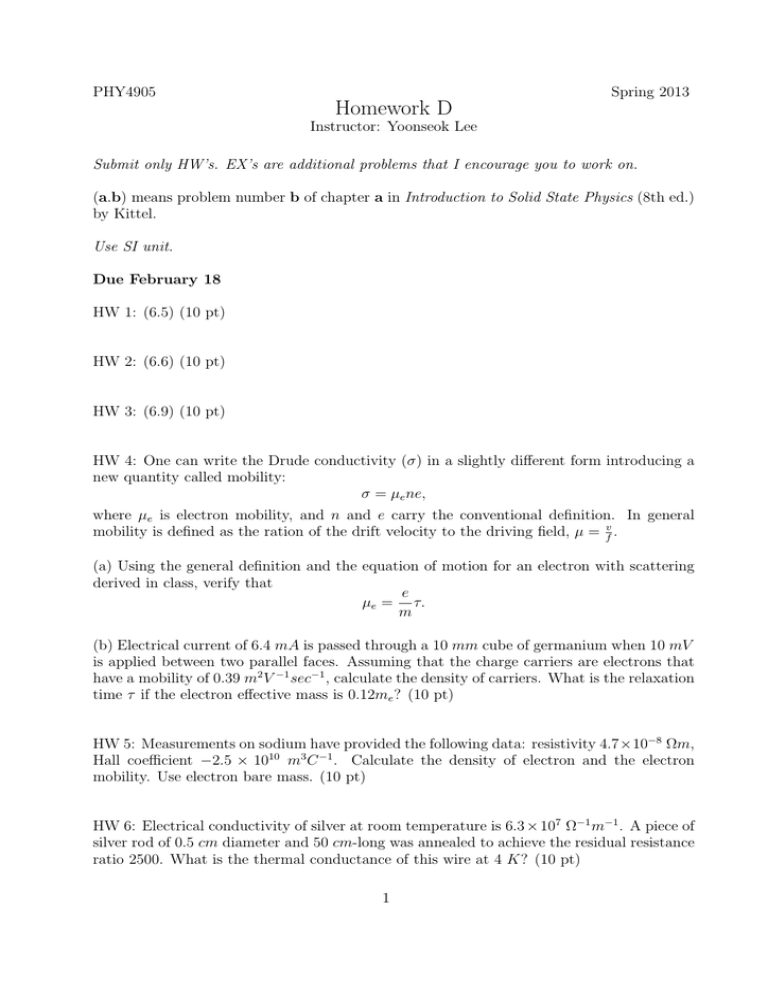
PHY4905 Spring 2013 Homework D Instructor: Yoonseok Lee Submit only HW’s. EX’s are additional problems that I encourage you to work on. (a.b) means problem number b of chapter a in Introduction to Solid State Physics (8th ed.) by Kittel. Use SI unit. Due February 18 HW 1: (6.5) (10 pt) HW 2: (6.6) (10 pt) HW 3: (6.9) (10 pt) HW 4: One can write the Drude conductivity (σ) in a slightly different form introducing a new quantity called mobility: σ = µe ne, where µe is electron mobility, and n and e carry the conventional definition. In general mobility is defined as the ration of the drift velocity to the driving field, µ = fv . (a) Using the general definition and the equation of motion for an electron with scattering derived in class, verify that e µe = τ. m (b) Electrical current of 6.4 mA is passed through a 10 mm cube of germanium when 10 mV is applied between two parallel faces. Assuming that the charge carriers are electrons that have a mobility of 0.39 m2 V −1 sec−1 , calculate the density of carriers. What is the relaxation time τ if the electron effective mass is 0.12me ? (10 pt) HW 5: Measurements on sodium have provided the following data: resistivity 4.7×10−8 Ωm, Hall coefficient −2.5 × 1010 m3 C −1 . Calculate the density of electron and the electron mobility. Use electron bare mass. (10 pt) HW 6: Electrical conductivity of silver at room temperature is 6.3 × 107 Ω−1 m−1 . A piece of silver rod of 0.5 cm diameter and 50 cm-long was annealed to achieve the residual resistance ratio 2500. What is the thermal conductance of this wire at 4 K? (10 pt) 1

